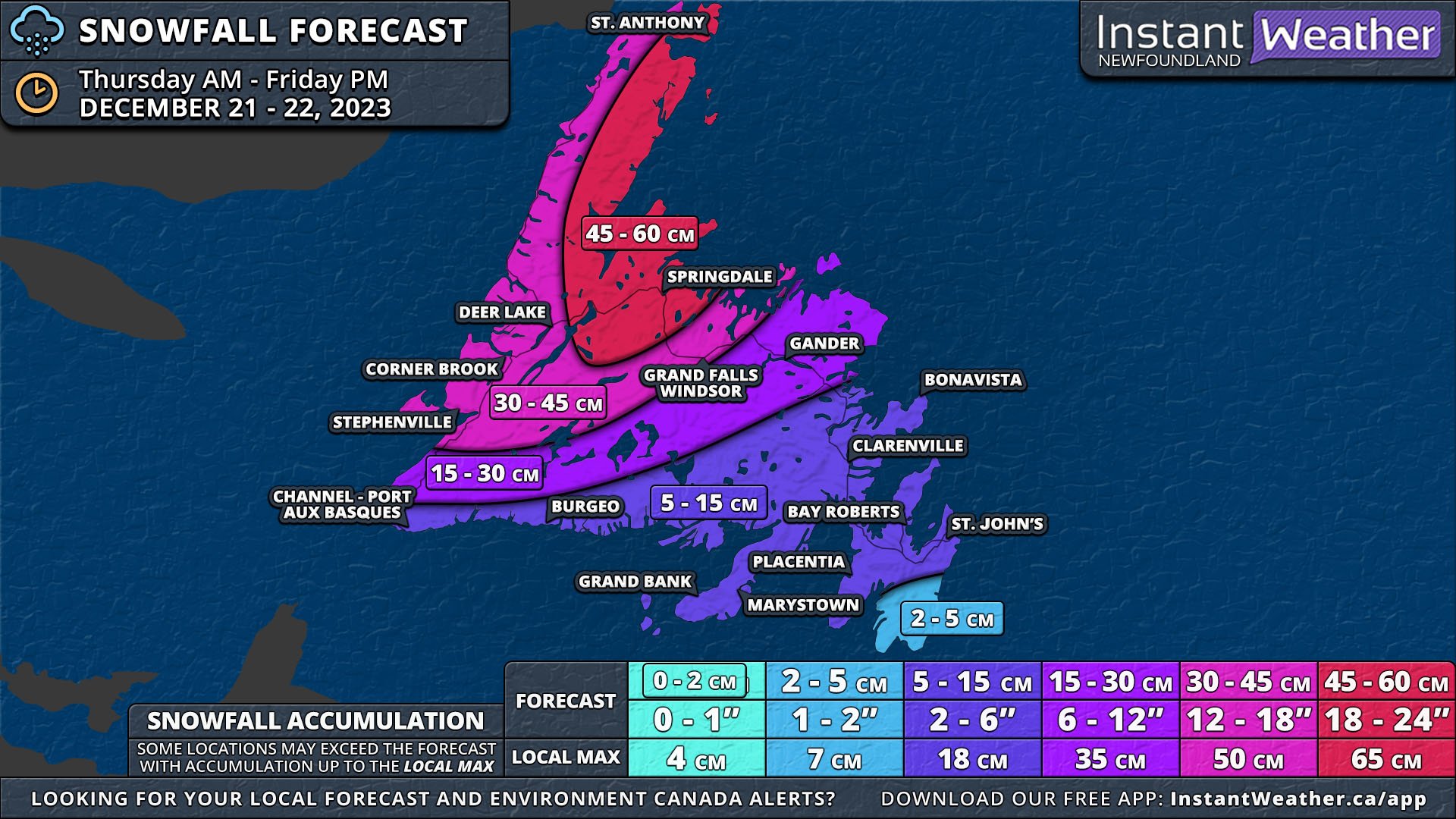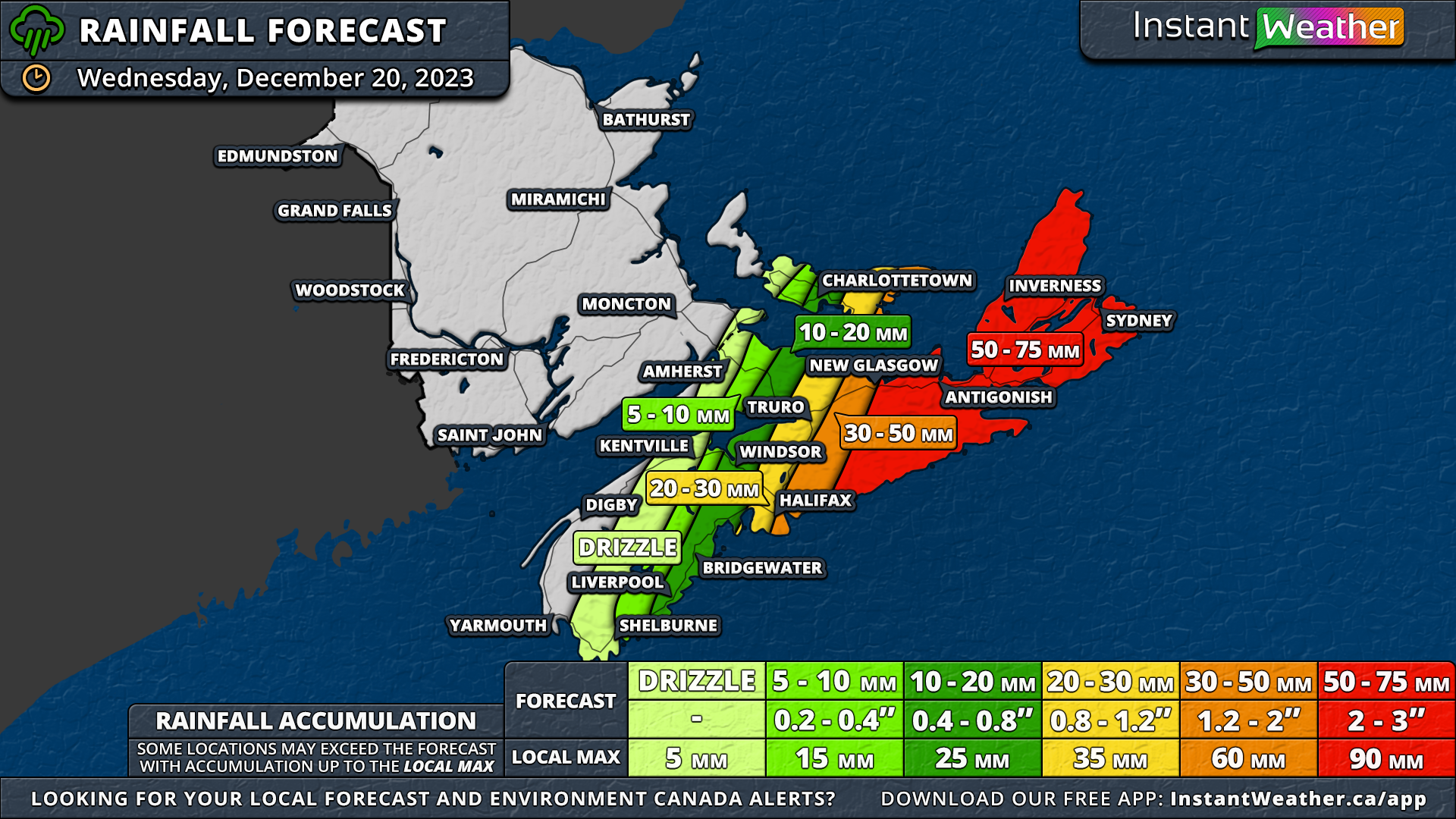Heavy Rains to Heavy Snow in Western Newfoundland Bringing Up to 60cm Through Friday
/Moisture continues to stream into the province from the south, and this trend is expected to persist throughout Friday and possibly into Saturday morning before a pause in the precipitation occurs. However, a surge of cold air from the west will transition the recent heavy rains into heavy snow starting overnight and into early Friday morning.
The shift will first occur over the Northern Peninsula, then gradually spread south and east into Central Newfoundland during the afternoon.
Expect the snow to be intense at times, with a broad area of Western Newfoundland—including the eastern half of the Northern Peninsula, the Connaigre Peninsula, and areas extending southward towards Deer Lake—anticipating over 60cm of snow, and potentially more in localized areas, by Friday's end.
Accompanying this significant snowfall will be wind gusts nearing 100km/h, creating occasional blizzard conditions that will make travel treacherous.
In areas of Western Newfoundland less affected, the remainder of the Island will begin to see snow by Friday afternoon as the cold air pushes eastward, gradually converting the rain to snow. This transition may include brief periods of freezing rain and/or ice pellets.
Snowfall totals in Central and Eastern Newfoundland will be considerably lower, with most of Central Newfoundland expecting under 30cm and Eastern Newfoundland, including the Avalon, less than 15cm.
The Southeast Avalon will experience the least snowfall, with no more than 5cm predicted by Friday's end. Along the South Coast, the rain will continue before it transitions to snow, placing Port-Aux-Basques and Burgeo in the 5-15cm range.

















